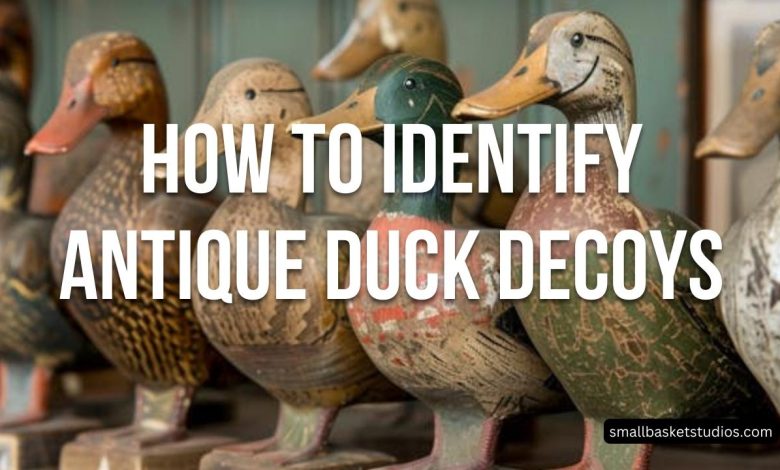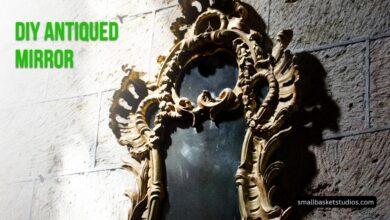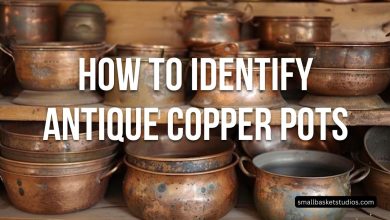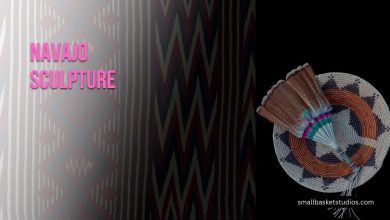How To Identify Antique Duck Decoys?

Have you ever stumbled upon a weathered wooden duck decoy at a flea market or hidden in the corner of an antique shop and wondered about its history? Duck decoys, once essential tools for hunters, have evolved into sought-after collectibles with intricate designs and rich stories to tell. Identifying these antique treasures requires a keen eye for detail and a passion for unraveling the mysteries of the past. Whether you’re a seasoned collector or just starting your journey into the world of decoy hunting, this guide will equip you with the knowledge to distinguish between everyday replicas and valuable relics from bygone eras. Join us as we delve into the fascinating world of antique duck decoys and unlock the secrets they hold within their beautifully crafted forms.
Significance of Antique Duck Decoys
Antique duck decoys hold a significant place in the historical and cultural landscape, offering a glimpse into the past when hunting was not only a means of survival but also a social activity. These handcrafted pieces were not just utilitarian tools but also works of art, reflecting the craftsmanship and creativity of their makers. Each decoy tells a story of its own, carrying with it the traditions and practices of bygone eras.
In terms of cultural significance, antique duck decoys provide insights into early American folk art and regional woodworking styles. They showcase the diversity in design and material choices across different regions, highlighting the unique aesthetic sensibilities prevalent during that time. Additionally, these decoys were crucial in preserving wildlife populations by regulating hunting activities and ensuring sustainable practices—a testament to both environmental awareness and conservation efforts embedded within our history.
Objectives for identifying genuine antique duck decoys
Identifying genuine antique duck decoys serves multiple purposes beyond just their aesthetic value. The main objectives for this identification process include understanding the historical context and significance of each decoy, determining their rarity and market value, as well as preserving these unique pieces of folk art for future generations. By carefully examining the craftsmanship, materials used, and any distinctive markings or signatures on a duck decoy, collectors can unlock valuable insights into the time period, region, and artisan responsible for its creation.
The Artistry Behind Antique Duck Decoys
Antique duck decoys represent a unique intersection of functionality and artistry, embodying the craftsmanship of early decoy makers. Each decoy carries a story within its meticulously carved details, reflecting the intricate knowledge of waterfowl anatomy and behavior. The varying styles and techniques employed by different artisans offer a glimpse into the regional traditions and practices prevalent during that era.
The patina that develops over years on these antique duck decoys not only adds to their aesthetic appeal but also serves as a testament to their longevity. One can appreciate the subtle nuances in paint application, from the weathered hues to delicate feather markings, showcasing the skillful hands that brought these wooden pieces to life. Beyond mere tools for hunting, these decoys stand as miniature sculptures embodying both utilitarian purpose and artistic excellence.
Discuss the craftsmanship involved in creating duck decoys historically.
Crafting duck decoys is an art form that dates back centuries, with skilled artisans meticulously carving and painting these wooden replicas of ducks. Each decoy was expertly crafted to not only replicate the physical appearance of various duck species but also to attract and trick real ducks by imitating their movements on water. The attention to detail in these historical decoys is remarkable, with some carvers even going as far as hand-painting intricate feather patterns and adding glass eyes for a lifelike effect.
Carvers of duck decoys historically were highly esteemed for their craftsmanship, often passing down their skills through generations. The materials used in creating these decoys varied based on availability and region, leading to unique styles and techniques emerging across different areas. These historical decoys were not just functional tools for hunting but also pieces of art that reflect the rich history of waterfowl hunting culture in North America. Collectors now treasure these antique decoys not only for their aesthetic appeal but also as valuable artifacts preserving a tradition of masterful craftsmanship and artistic expression.
Highlight key artists and regions known for their distinctive styles.
When it comes to antique duck decoys, key artists and regions known for their distinctive styles play a significant role in identifying the authenticity of these pieces. The Midwest region, particularly Illinois and Wisconsin, is renowned for producing decoys with intricate details and lifelike painting techniques. Artists such as Charles Perdew from Illinois are highly regarded for their anatomically precise carvings that capture the essence of waterfowl.
Moving westward, regions like California have their own distinct style characterized by more stylized and abstract designs. Artists like Oscar Peterson from San Francisco are known for incorporating unique elements into their decoys, such as exaggerated features and bold paint choices. These regional variations offer collectors a diverse range of styles to appreciate and study when identifying antique duck decoys.
Materials and Manufacturing Techniques
Materials and manufacturing techniques play a crucial role in identifying the authenticity of antique duck decoys. Most traditional decoys were crafted from wood, such as cedar, pine, or tupelo, due to their buoyancy and ease of carving. Carvers often employed hollow body construction to ensure lightness and optimal floatation in water. The type of wood used can give valuable clues about the age and origin of the decoy.
In addition to wood, other materials like cork and canvas were also utilized in the manufacturing process. Cork provided durability and flexibility for intricate detailing, while canvas added texture and realism to the decoys’ appearance. Understanding these various materials offers valuable insights into the historical context and regional traditions of decoy making practices. By studying the manufacturing techniques employed in creating these pieces, collectors can better authenticate antique duck decoys and appreciate the craftsmanship behind each unique creation.
– Examine the variety of materials used over different periods, including wood types and paint finishes.
Throughout different historical periods, the materials used in creating duck decoys have varied greatly. Early decoys were primarily made from local woods such as pine, cedar, and cypress due to their easy availability and workability. As craftsmanship advanced, carvers began utilizing hardwoods like oak and mahogany for more intricate designs.
In terms of paint finishes, older duck decoys often featured more muted colors such as browns, blacks, and greys to mimic the natural appearance of ducks. However, with changing artistic trends and techniques, later decoys exhibited bolder color choices using oil-based paints for a realistic look. Understanding the evolution of materials and finishes in duck decoy making can offer valuable insights when identifying and valuing these unique pieces of artistry.
Analyze how manufacturing techniques evolved and what that reveals about a decoy’s age
As we delve into the world of antique duck decoys, one fascinating aspect to consider is how manufacturing techniques have evolved over time. By closely analyzing the methods used to create these decoys, we can uncover valuable clues about their age and historical significance. For example, early decoys crafted using hand tools and simple carving techniques may exhibit a rougher finish and less intricate detailing compared to more modern decoys created using advanced machinery.
The type of materials used in constructing these decoys can also offer insights into their age. Antique duck decoys made from traditional materials such as wood or cork are likely to be older compared to those made from synthetic materials like plastic. Observing the wear and patina on a decoy can provide hints about its age as well, with older pieces often showing signs of natural aging that add to their charm and authenticity. By understanding how manufacturing techniques have evolved over time, collectors and enthusiasts can better appreciate the rich history behind each antique duck decoy they encounter.
Hallmarks of Age: Distinguishing Antique from Reproduction
When it comes to distinguishing between antique duck decoys and reproductions, there are key hallmarks that can help collectors make informed decisions. One such hallmark is the patina of the decoy. Antique decoys tend to have a natural aged patina that develops over time, while reproductions may appear too shiny or uniform in color. Another important feature to look at is the craftsmanship of the decoy. Antiques often display intricate carving details and wear consistent with their age, whereas reproductions may lack this level of authentic craftsmanship.
Studying the materials used in constructing the duck decoy can also be telling. Many antiques were carved from solid pieces of wood such as cedar or pine, which can show signs of age like cracking or warping. Reproductions, on the other hand, may use newer materials or techniques that result in a more pristine appearance. By paying attention to these hallmarks of age, collectors can better identify and appreciate the true antique pieces in their collection.
Identify wear patterns, aging signs in materials, and other indicators of period authenticity.
When assessing the authenticity of antique duck decoys, it is crucial to pay close attention to wear patterns and aging signs in materials. For instance, natural patina formed over time can indicate the age of the decoy. Look for weathering effects such as cracks, fading paint, and worn spots which can be indicative of a well-used and aged piece. Additionally, observe any unique wear patterns that may suggest how the decoy was handled or stored throughout its history.
Another important indicator of period authenticity is the type of materials used in making the duck decoy. Different time periods favored specific types of wood and paints for creating these hunting tools. By analyzing the wood grain, paint composition, and construction techniques used in a decoy, collectors can gain valuable insights into its historical origin. This attention to detail not only helps in verifying authenticity but also sheds light on the craftsmanship and cultural influences prevalent during that era.
Provide guidance on discerning between genuinely aged pieces and artificially aged reproductions.
When attempting to identify genuine aged duck decoys from artificial reproductions, one of the key factors to consider is the overall patina of the piece. Authentic antique decoys will often display a natural aged patina that develops over time, reflecting years of use and exposure to elements such as water, sunlight, and air. Artificially aged decoys may have a more uniform or exaggerated patina that lacks the depth and subtlety seen in truly aged pieces.
Important aspect to examine is the wear patterns on the decoy. Genuine antique decoys typically exhibit signs of wear in areas where they would naturally come into contact with handling or usage, such as on the head, tail, or underside. In contrast, artificially aged reproductions may show wear marks that appear inconsistent or artificially applied in an attempt to mimic the effects of age. By closely examining these wear patterns and considering how they align with typical usage scenarios, collectors can better discern between authentic and replica duck decoys.
The Role of Provenance in Authentication
The role of provenance in authentication cannot be overstated when it comes to identifying antique duck decoys. Provenance essentially serves as the historical documentation or trail of ownership that gives credibility and authenticity to an object. In the case of duck decoys, knowing the provenance can help determine the age, origin, and maker of a particular piece, which are crucial factors in authenticating its antiquity.
Establishing provenance for a duck decoy often involves meticulous research into various records such as auction catalogs, historical documents, and collector’s archives. A well-documented provenance can significantly increase the value and desirability of a duck decoy among collectors and enthusiasts. It adds a layer of history and story behind the object, making it more than just a simple decorative item but rather a piece with significant cultural and artistic value. By understanding the role of provenance in authentication, collectors can make informed decisions when it comes to acquiring or evaluating antique duck decoys.
Define provenance and its importance in verifying an antique’s history and value.
Provenance is the documented history of an object, tracing its ownership and origins over time. In the world of antiques, provenance plays a crucial role in verifying the authenticity, history, and value of an item like a duck decoy. By establishing provenance, collectors can gain insight into where and when the decoy was made, who owned it in the past, and any significant events or stories attached to it.
The importance of provenance in verifying an antique duck decoy’s history and value cannot be overstated. Without a clear record of ownership and origin, it becomes challenging to distinguish between an original piece made by a renowned artisan and a reproduction or fake. Provenance adds layers of depth to an item’s story, making it more valuable not only monetarily but also historically and culturally. Collectors rely on provenance to make informed decisions about acquiring these pieces that hold both artistic beauty and historical significance.
Offer advice on how to research and document provenance effectively.
When researching and documenting the provenance of antique duck decoys, it is crucial to cast a wide net. Look beyond traditional sources such as auction catalogs and antiques dealers. Explore local historical societies, library archives, and even online forums dedicated to collectibles. Connecting with experts in the field can also provide valuable insights into the history of a particular decoy.
To effectively document provenance, create a detailed record that includes information on previous owners, dates of purchase or sale, and any accompanying documentation such as receipts or appraisals. Utilize digital tools to organize your findings and maintain clear records for reference. Remember that provenance is not just about tracing ownership but also understanding the cultural context in which the decoy was created and used.
Identifying Makers’ Marks and Signatures
Identifying makers marks and signatures on antique duck decoys is like solving a mystery that connects the past to the present. These unique markings hold invaluable information about the craftsmen behind these exquisite pieces of art. Each mark or signature tells a story, providing clues to the origin, date, and authenticity of a decoy.
One way to identify makers marks is by carefully examining any inscriptions or labels found on the decoy. Some skilled artisans would proudly sign their work, making it easier for collectors to trace back its history. However, in some cases, signatures may be obscure or difficult to decipher due to wear and tear over time. In such instances, seeking guidance from experts in the field can be key to unlocking the secrets hidden within these vintage treasures.
Explain common locations for makers’ marks or signatures on duck decoys.
Makers’ marks or signatures on duck decoys can often be found in various locations, providing valuable clues to the authenticity and origin of the piece. One common location for makers’ marks is on the underside of the decoy, typically near the tail or underside of the base. This discreet placement ensures that the mark doesn’t detract from the aesthetic appeal of the decoy while still allowing for easy identification by collectors and enthusiasts.
Another notable location for makers’ marks is on the bottom surface of the decoy’s body, near where it meets with the base. This area offers a more practical approach to signature placement as it can be easily viewed when displaying or examining the duck decoy. Additionally, some makers may choose to include their mark on a specific part of the decoy, such as under a wing or along its back, adding a unique touch to their craftsmanship and making it easier for identification purposes.
Offer tips on deciphering faded or hard-to-read markings.
Deciphering faded or hard-to-read markings on antique duck decoys can be a challenging yet rewarding task for collectors and enthusiasts. One tip is to examine the decoy under different lighting conditions, such as natural light or with a flashlight, to bring out any hidden details. Additionally, using a magnifying glass can help in revealing small and intricate markings that may not be visible to the naked eye.
Helpful technique is to gently clean the surface of the decoy with a soft cloth or brush to remove dirt and grime that may be obscuring the markings. Be cautious when cleaning, as harsh chemicals or abrasive materials could potentially damage the delicate surface of the decoy. Finally, consulting reference books, online resources, and expert appraisers can provide valuable information on deciphering markings and identifying the maker of an antique duck decoy. By combining careful observation with research and expert advice, collectors can uncover the hidden stories behind these fascinating pieces of history.
Conclusion
Identifying and valuing antique duck decoys can be a rewarding journey for collectors and enthusiasts alike. The intricate details, craftsmanship, and history behind each piece add a layer of fascination to this niche hobby. Through thorough research, keen observation of materials and construction techniques, as well as consulting with experts in the field, one can develop a discerning eye for authentic antique decoys.




